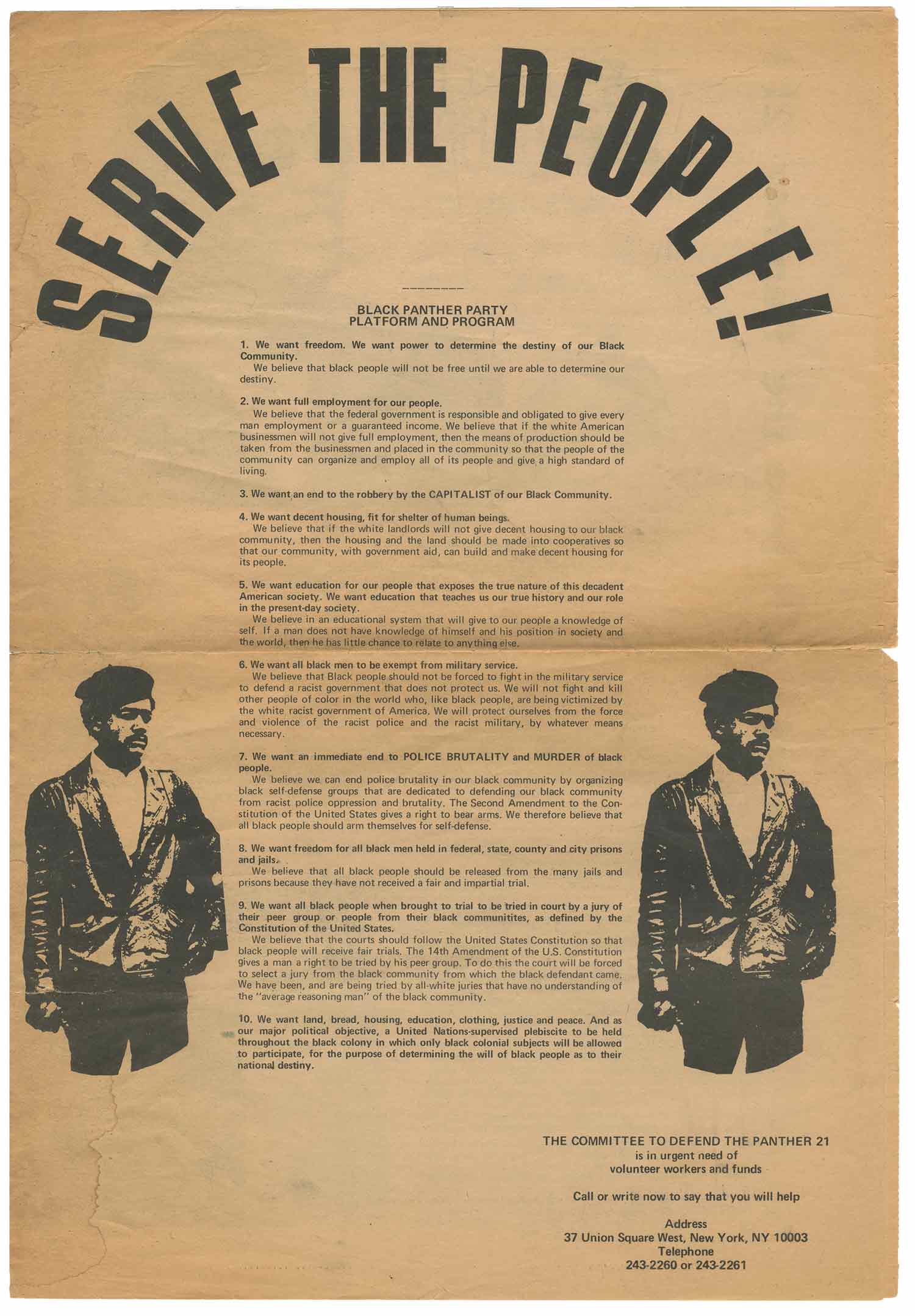In the summer of 2020, as the streets of Brooklyn filled with protests against police brutality and the city responded with a nightly curfew and skies full of police helicopters, a group of volunteers came together at Interference Archive, where the two of us are collaborators, to look at how we can learn from the history of similar organizing. At the archive, which is volunteer-run and collectively operated, we house decades’ worth of donated activist art and social movement material. The archive is open stacks, meaning people can drop by our Brooklyn-based space and leaf through materials during open hours. It’s important for us to make the artifacts we have, some of which are rare or only housed in institutional archives, available to the public. One of the ways we do that is through regular exhibitions.
Against the backdrop of the 2020 uprisings, a few of us began pulling materials related to police violence and carceral systems: newspapers and artwork that documented police killings, notices of trainings on how to monitor and record the police, and leaflets for mass protests that would shut down subway systems or block traffic after police abuses.
As we sorted through this material, we saw that the ongoing calls to defund the police and refund communities were built on a long history of activism, and that the fight for sustainable public safety ran parallel to the state’s dismantling of public resources. The call to defund police was an effort to stem this tide and properly resource marginalized communities. Each victim of police violence and each family member that fought to memorialize them was part of this story. That’s how Defend / Defund, which opened in October at the archives, was born.

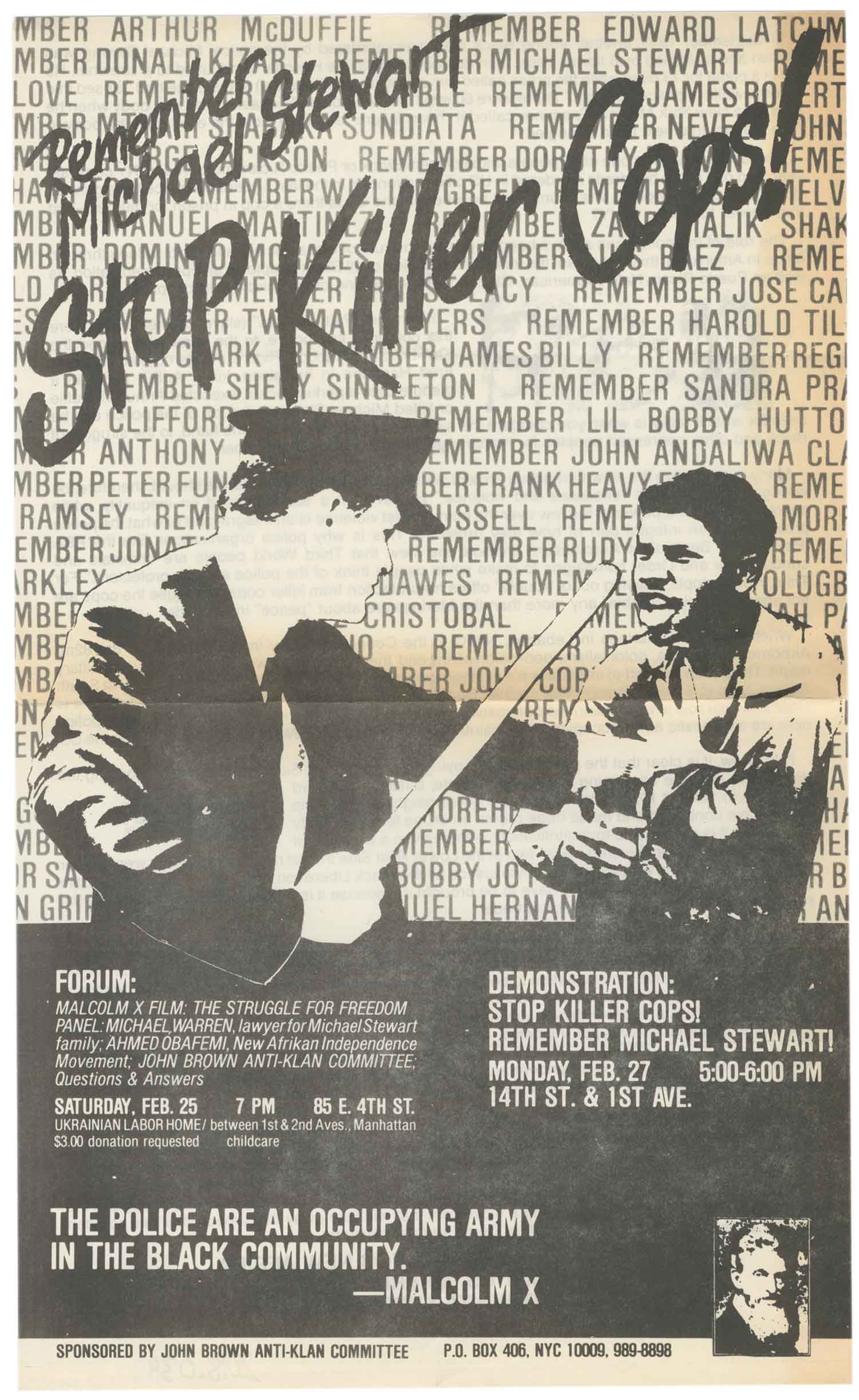
We decided we wanted this exhibition to center the work of Black organizers and the families of victims of police violence, and therefore, there were many things we left out — such as organizing within prisons against guards and white nationalist gangs, activist responses to the war on terror and surveillance of Muslim Americans, resistance to border patrol and ICE, and advocacy against the criminalization of youth in the school system. But we saw that there was so much material covering Black resistance and resilience and the unique history of the criminalization of African Americans that we wanted that to be the focus. With that narrative, we included allies and co-conspirators in the movement including Indigenous, Asian American, Latinx, and queer organizers.
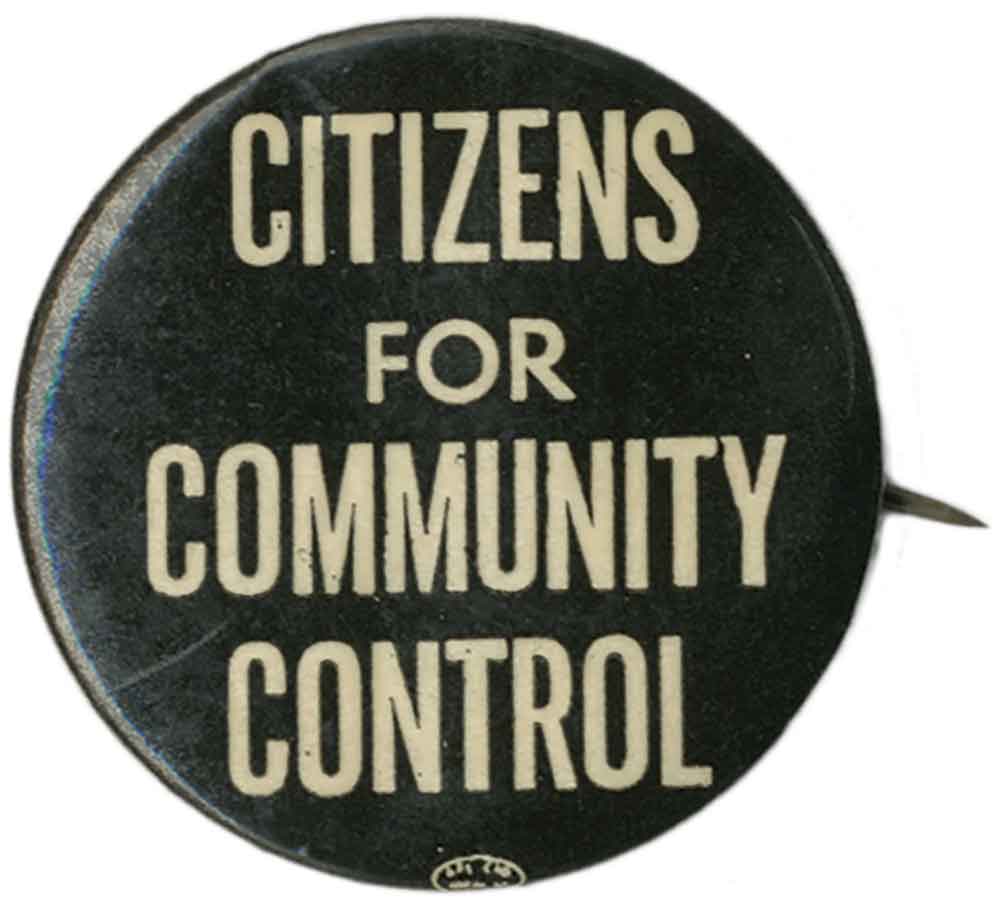

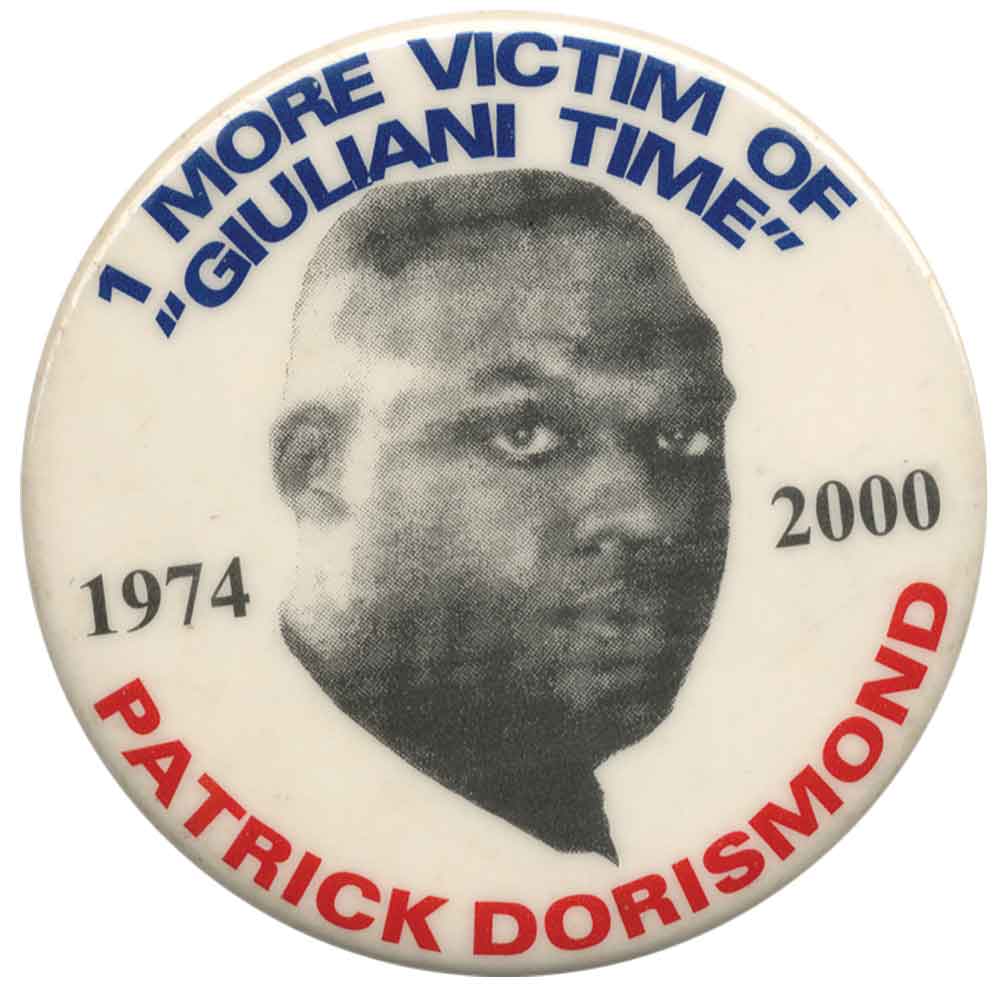

Communities have responded to the occupation of their neighborhoods in many different ways, and Defend / Defund highlights a diversity of tactics. Robert F. Williams pioneered the use of armed safety patrols in the 1950s after it was clear that the local police would not protect his Monroe, North Carolina chapter of the NAACP from Klan violence. His writings later inspired the police patrols of the Black Panther Party and Deacons of Defense. CopWatch was developed in the 1990s as a method for documenting police abuse in Berkeley, California, and the tactic spread to cities across the United States. Before cellphone cameras made the practice more commonplace, CopWatch chapters would train bystanders to film police using camcorders and distribute the videos to media and activist organizations. The Stolen Lives Project published a phonebook-sized volume of police murders from 1990 to 1996, expanded through a second edition in 1999, well before the press was keeping record of police killings; it also created PSAs with artists like Chuck D and Wyclef Jean about individual victims and their families that aired on MTV and BET.
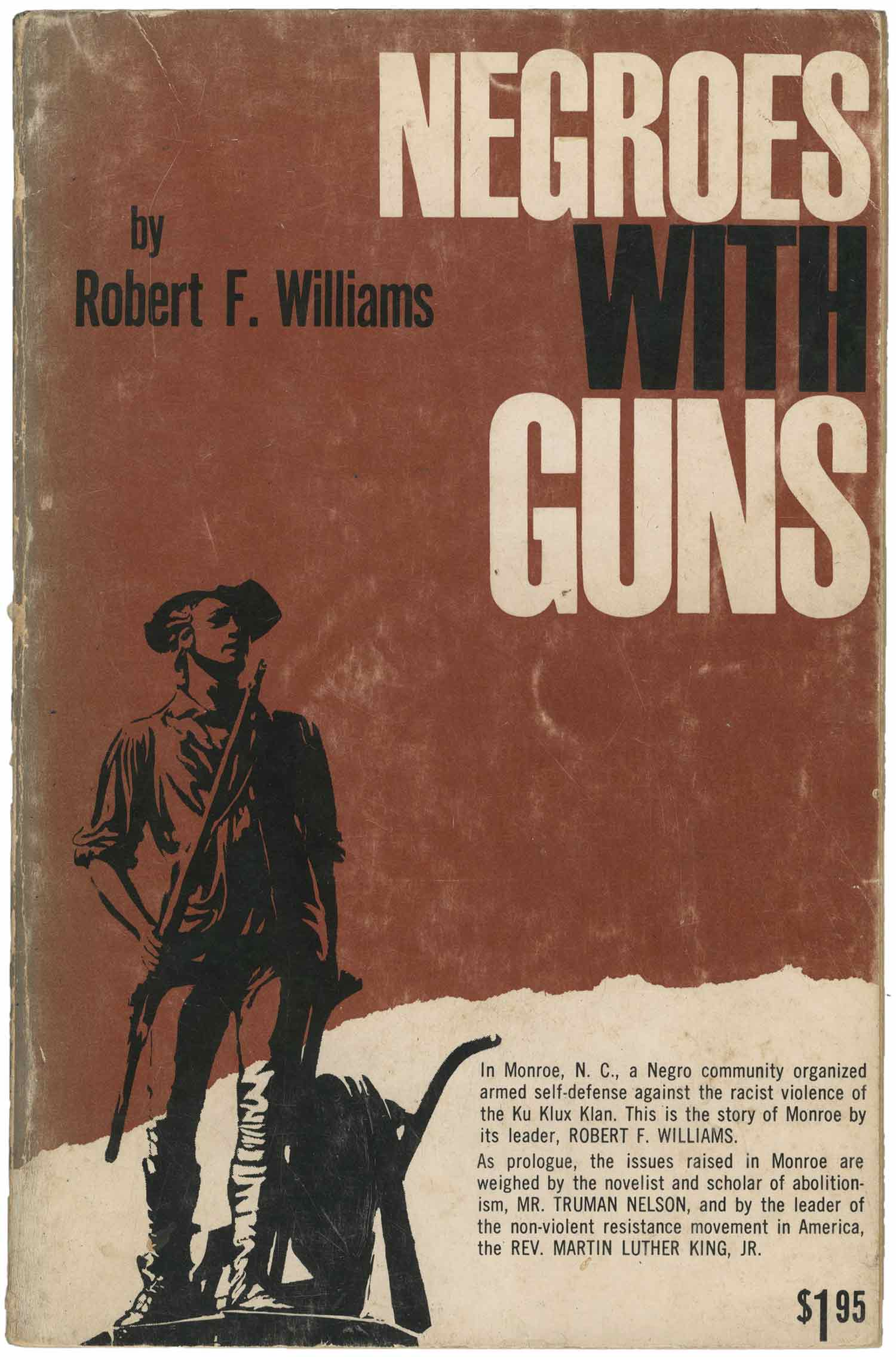
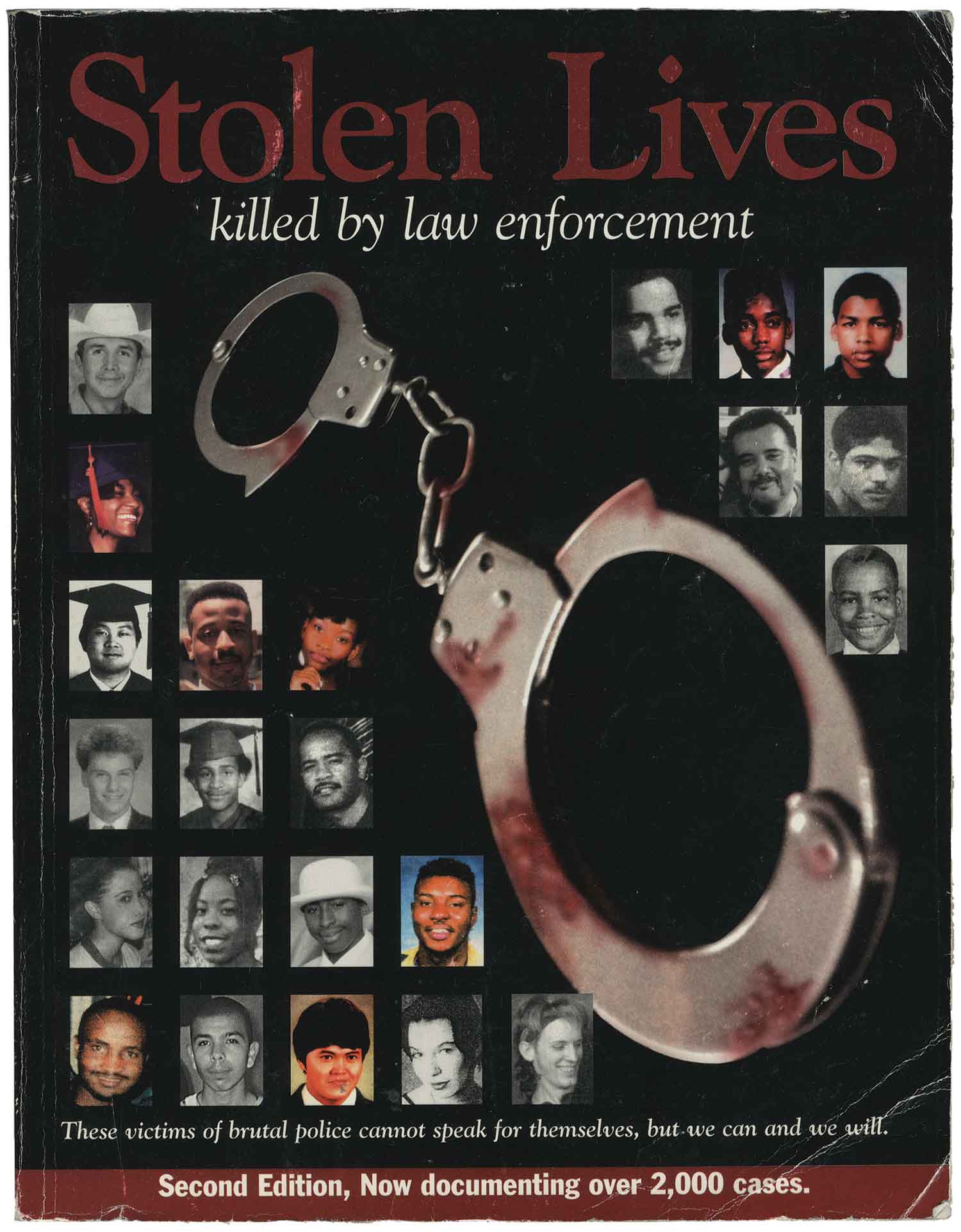
Queer and Black feminist organizers like Critical Resistance, INCITE!, and Survived & Punished, meanwhile, became more prevalent in the late 1990s through the 2010s, leading the charge to push for bail reform, decriminalize drug users and sex workers, and stop the construction of new prisons and jails. These organizations and others have developed non-carceral responses to violence in their communities and modeled mutual aid as a way of meeting people’s immediate needs.


In the lead-up to what became Defend / Defund our research expanded to include interviews with organizers that we wove into the exhibition narrative. We knew our individual knowledge wasn’t enough to tell this complex history, and so we chose activists, scholars, and artists that were previously or currently involved with anti-police organizing. Some of their work is present in the exhibition itself, like the artist Dread Scott’s piece Danger: Police in Area/Sign of the Times from 1999. Or material from New York CopWatch, which was influenced by Nuyorican activist Dennis Flores’ Sunset Park CopWatch.


Our section on queer organizing and our section on abolitionist thought in the ‘90s and 2000s included material from Mariame Kaba’s organizations Survived & Punished, Project NIA, and We Charge Genocide. Surprisingly little has been written about student organizing by the hip-hop generation in the 1990s, and so we reached out to Dr. Joshua Myers at Howard University to talk about the legacy of militant student organizing and hip-hop artists both on campus and in cities during the time of the L.A. Riots. Their experiences and scholarship expounded out the narrative that archival materials alone couldn’t tell.

All of the materials at this new exhibition and the broader archive — zines, posters, buttons, alternative and leftist newspapers — were originally intended for mass distribution, and all of it was designed as agit-prop: to move people to action or to strengthen insurgent communities. The modern Defund movement, rooted in abolitionist practice, seeks to protect vulnerable communities from police violence, divest from the carceral system, and invest in true public safety. We hope this exhibition acts as a starting point to explore the history of the struggle against police violence and build on the narrative of how carceral systems shape our lives today. The past informs the present organizing to resist police brutality. That work, and ours, continues.
The Defend / Defund exhibition, on view at Interference Archive through January 29, 2023, looks at resistance to policing and police brutality in the 20th and 21st centuries in the United States. This essay was co-authored by archive volunteers Jen Hoyer and Brooke Darrah Shuman.
All images courtesy of Interference Archive.
Header image: Committee to Defend the Black Panther 12, Serve the People: Black Panther Party Platform and Program, printed in Black Panther (New York, NY), newspaper, [1969/1970].
